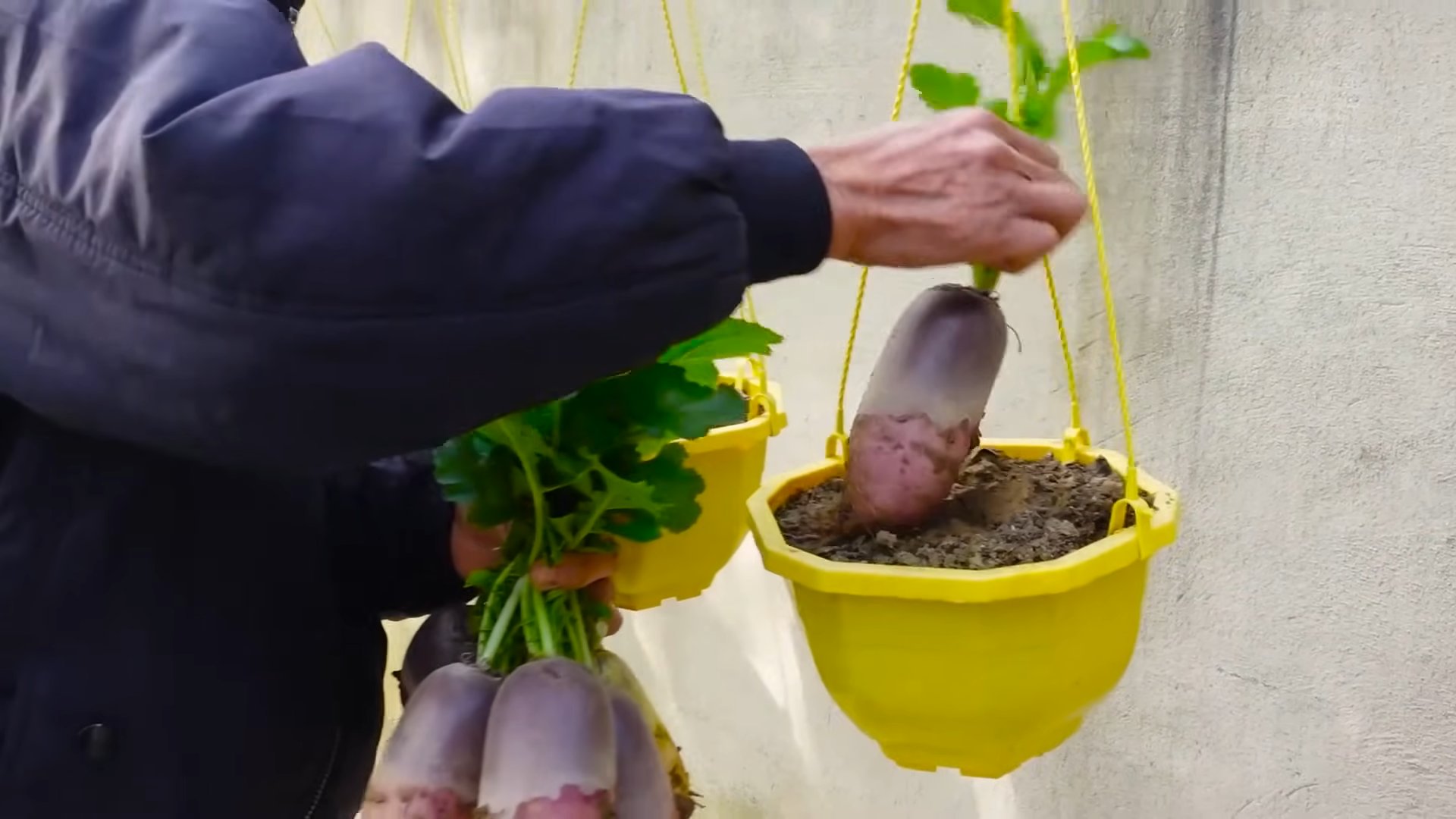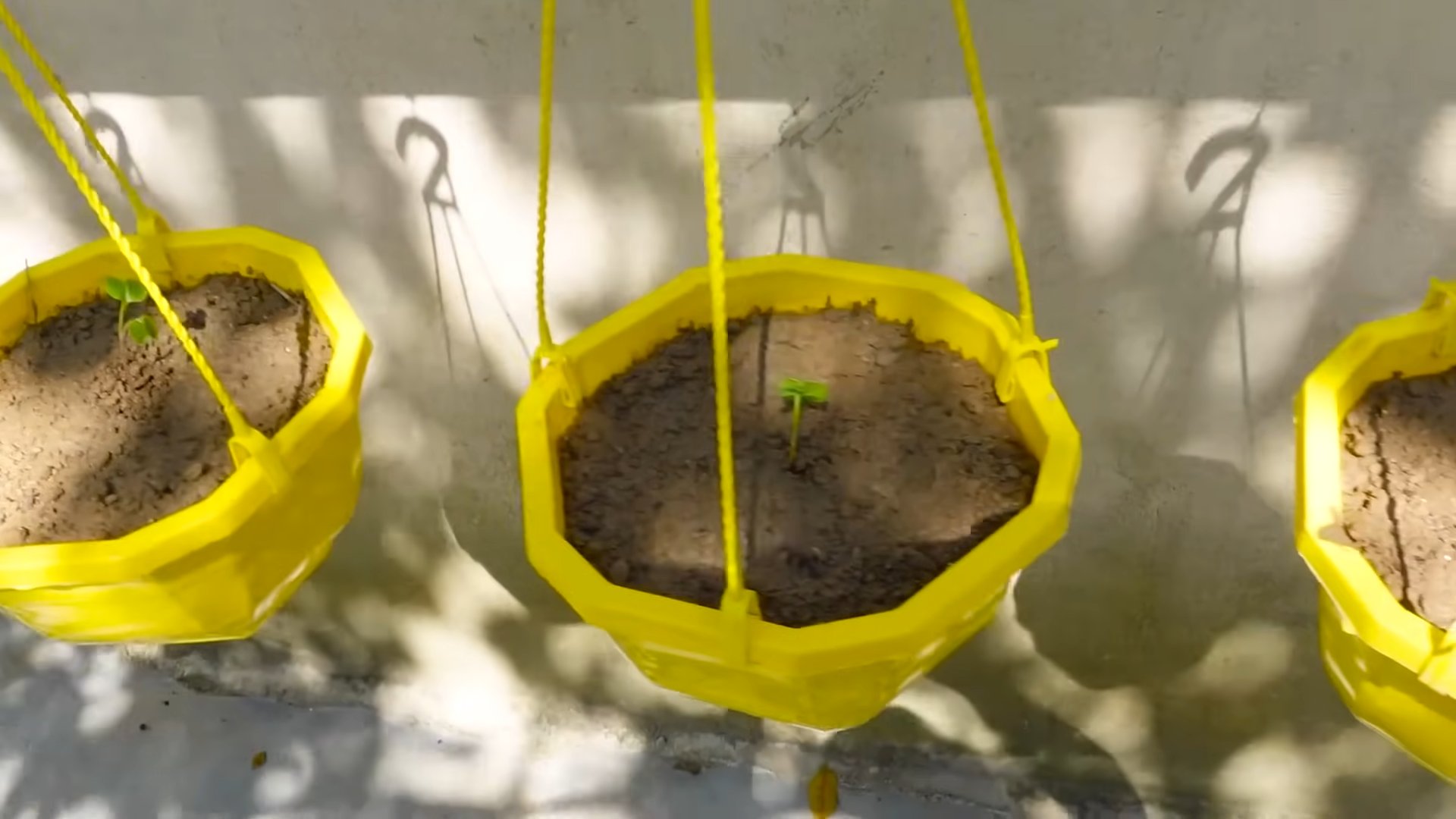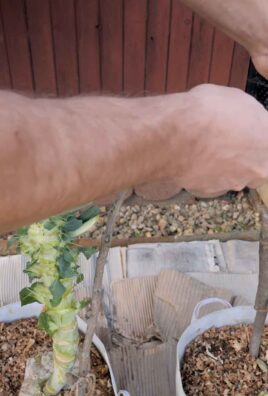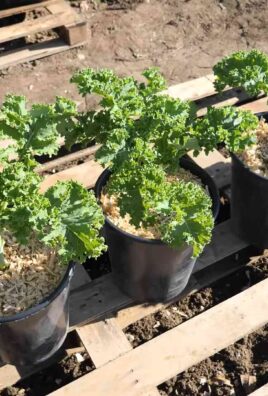Grow Pink Radishes in Pots? Absolutely! Imagine harvesting vibrant, peppery pink radishes right from your balcony or patio. It’s easier than you think, and I’m here to show you how with this simple DIY guide. For centuries, radishes have been a staple in gardens worldwide, prized for their quick growth and zesty flavor. From ancient Egypt to modern-day salads, these root vegetables have nourished and delighted palates across cultures.
But let’s face it, not everyone has a sprawling backyard to dedicate to gardening. That’s where the magic of container gardening comes in! Growing radishes in pots is a fantastic solution for urban dwellers, apartment residents, or anyone with limited space. Plus, it allows you to control the soil quality and growing conditions, leading to a more successful and bountiful harvest.
This DIY trick is a game-changer because it allows you to enjoy fresh, homegrown radishes even if you’re short on space. Forget those bland, store-bought radishes! With a few simple steps, you can grow pink radishes in pots that are bursting with flavor and color. I’ll walk you through everything you need to know, from choosing the right pot and soil to watering and harvesting your delicious, homegrown crop. Let’s get started!

Grow Your Own Pretty Pink Radishes in Pots: A Beginner’s Guide
Okay, so you want to grow radishes, and not just any radishes, but the vibrant, Instagram-worthy pink ones? You’ve come to the right place! Growing radishes in pots is super easy, even if you’re a complete newbie to gardening. They’re fast-growing, so you’ll see results in just a few weeks, and they add a peppery kick to salads and snacks. Let’s get started!
Choosing the Right Radish Variety
First things first, you need to pick your radish variety. While there are tons of different types, for that beautiful pink hue, you’ll want to look for varieties like:
* Pink Beauty: This is a classic choice, known for its bright pink skin and mild flavor.
* French Breakfast: These are elongated radishes with a vibrant red top that fades to white at the bottom. While not entirely pink, they have a lovely pinkish-red appearance.
* Easter Egg Blend: This is a mix of different colored radishes, including pink, red, purple, and white. It’s a fun option if you want a variety of colors in your harvest.
I personally love the Pink Beauty for its consistent color and easy growth.
Gathering Your Supplies
Before you start planting, make sure you have everything you need. Here’s a checklist:
* Pot: Choose a pot that’s at least 6 inches deep and wide. Radishes don’t need a ton of space, but they do need enough room for their roots to develop. A wider pot will also allow you to plant more radishes.
* Potting Mix: Use a high-quality potting mix that’s well-draining. Avoid using garden soil, as it can be too heavy and compact for container gardening. I recommend a mix specifically formulated for vegetables.
* Radish Seeds: Of course! Make sure you buy fresh seeds from a reputable source. Check the expiration date on the packet to ensure they’re still viable.
* Watering Can or Hose: You’ll need a way to water your radishes regularly. A watering can with a gentle rose head is ideal for preventing soil erosion.
* Fertilizer (Optional): While radishes don’t need a lot of fertilizer, a light feeding can help them grow faster and produce larger roots. Use a balanced, water-soluble fertilizer diluted to half strength.
* Trowel or Small Shovel: For filling your pot with soil and making small holes for the seeds.
* Sunlight: Radishes need at least 6 hours of sunlight per day. Choose a sunny spot on your balcony, patio, or windowsill.
Planting Your Radish Seeds
Now for the fun part! Here’s how to plant your radish seeds:
1. Fill the Pot: Fill your pot with potting mix, leaving about an inch of space at the top. Gently pat down the soil to remove any air pockets.
2. Sow the Seeds: Sprinkle the radish seeds evenly over the surface of the soil. Aim for about 1 inch of space between each seed. You can also use your finger to make small indentations in the soil, about 1/2 inch deep, and place one seed in each indentation.
3. Cover the Seeds: Lightly cover the seeds with a thin layer of potting mix.
4. Water Gently: Water the soil gently with a watering can or hose. Make sure the soil is moist but not waterlogged.
5. Label Your Pot: It’s always a good idea to label your pot with the date you planted the seeds and the variety of radish you’re growing. This will help you keep track of your progress.
Caring for Your Radishes
Radishes are relatively low-maintenance, but here are a few things you can do to ensure a successful harvest:
* Watering: Keep the soil consistently moist, but not soggy. Water your radishes whenever the top inch of soil feels dry to the touch. Overwatering can lead to root rot, while underwatering can cause the radishes to become small and tough.
* Thinning: Once your radish seedlings emerge, thin them out so that they’re about 1-2 inches apart. This will give them enough space to grow and prevent overcrowding. To thin, simply snip off the extra seedlings at the soil line with scissors. Don’t pull them out, as this can disturb the roots of the remaining plants.
* Fertilizing (Optional): If you choose to fertilize your radishes, do so about 2 weeks after they emerge. Use a balanced, water-soluble fertilizer diluted to half strength. Avoid over-fertilizing, as this can cause the radishes to develop excessive foliage at the expense of root growth.
* Sunlight: Make sure your radishes are getting at least 6 hours of sunlight per day. If you’re growing them indoors, you may need to supplement with a grow light.
* Weed Control: Keep your pot free of weeds, as they can compete with your radishes for nutrients and water. Hand-pull any weeds that you see.
* Pest Control: Radishes are generally pest-resistant, but they can sometimes be attacked by flea beetles or aphids. If you notice any pests, you can try spraying them with insecticidal soap or neem oil.
Harvesting Your Radishes
This is the most rewarding part! Radishes are typically ready to harvest in about 3-4 weeks after planting. Here’s how to tell when they’re ready:
* Check the Size: The radish roots should be about 1 inch in diameter. You can gently brush away some of the soil around the base of the plant to check the size of the root.
* Check the Color: The radish skin should be bright and vibrant.
* Test One: If you’re unsure, you can always pull one radish to test it. If it’s firm and crisp, it’s ready to harvest.
To harvest your radishes, simply grasp the leaves near the base of the plant and gently pull. If the soil is dry, you may need to loosen it with a trowel first.
Enjoying Your Harvest
Now that you’ve harvested your beautiful pink radishes, it’s time to enjoy them! Here are a few ideas:
* Eat them raw: Radishes are delicious eaten raw in salads, sandwiches, or as a snack.
* Roast them: Roasting radishes mellows out their peppery flavor and makes them tender and sweet.
* Pickle them: Pickled radishes are a tangy and crunchy addition to tacos, sandwiches, and salads.
* Use the greens: Don’t throw away the radish greens! They’re edible and can be used in salads, soups, or stir-fries.
Troubleshooting
Even with the best care, you might encounter a few problems when growing radishes. Here are some common issues and how to fix them:
* Radishes are small and tough: This is usually caused by underwatering or overcrowding. Make sure you’re watering your radishes regularly and thin them out if they’re too close together.
* Radishes are cracked: This can be caused by inconsistent watering. Try to keep the soil consistently moist, but not waterlogged.
* Radishes are bolting (going to seed): This is usually caused by hot weather. Radishes prefer cool temperatures, so try to plant them in the spring or fall. If you’re growing them in the summer, provide them with some shade during the hottest part of the day.
* Radishes are not forming roots: This can be caused by poor soil or over-fertilizing. Make sure you’re using a high-quality potting mix and avoid over-fertilizing.
Extra Tips for Radish Success
* Succession Planting: Plant a new batch of radish seeds every 2 weeks for a continuous harvest.
* Companion Planting: Radishes grow well with carrots, lettuce, and spinach.
* Rotate Your Crops: Avoid planting radishes in the same spot year after year, as this can deplete the soil of nutrients.
* Have Fun! Gardening should be enjoyable. Don’t be afraid to experiment and try new things.
Growing pink radishes in pots is a rewarding and easy way to add fresh, flavorful vegetables to your diet. With a little bit of care and attention, you can enjoy a bountiful harvest of these beautiful and delicious root vegetables. Happy gardening!

Conclusion
So, there you have it! Growing pink radishes in pots is not only achievable, but it’s also a remarkably rewarding experience. Forget those bland, store-bought radishes that lack the vibrant flavor and satisfying crunch you crave. With this simple DIY trick, you can cultivate your own supply of peppery perfection, right on your patio, balcony, or even a sunny windowsill.
Why is this a must-try? Because it puts you in control. You choose the radish variety, ensuring you get the exact flavor profile you desire. You control the growing environment, guaranteeing optimal conditions for healthy, robust growth. And, perhaps most importantly, you experience the unparalleled satisfaction of harvesting something you nurtured from seed to table.
Beyond the basic method, there’s plenty of room for experimentation. Try different radish varieties! ‘French Breakfast’ radishes offer a milder flavor, while ‘Cherry Belle’ radishes are known for their classic, round shape and bright red color. You could even explore heirloom varieties for unique colors and flavors. Consider companion planting. Marigolds can help deter pests, while chives can enhance the flavor of your radishes.
Don’t be afraid to get creative with your container choices, too. While a standard pot works perfectly well, you could also repurpose old buckets, tubs, or even grow bags. Just ensure your chosen container has adequate drainage.
Growing pink radishes in pots is more than just a gardening project; it’s a gateway to fresher, healthier eating. Imagine adding these vibrant gems to your salads, tacos, or simply enjoying them as a crunchy, peppery snack. The possibilities are endless!
We wholeheartedly encourage you to give this DIY trick a try. It’s easy, affordable, and incredibly satisfying. And once you’ve harvested your first batch of homegrown radishes, we’d love to hear about your experience! Share your photos, tips, and tricks in the comments below. Let’s build a community of radish-growing enthusiasts! This method is a fantastic way to ensure you always have fresh, delicious radishes on hand, and it’s a great way to introduce children to the joys of gardening. So, grab your seeds, potting mix, and a pot, and get ready to enjoy the taste of homegrown goodness. You’ll be amazed at how easy it is to grow your own delicious, crisp, and vibrant pink radishes.
Now, let’s address some frequently asked questions to ensure your radish-growing journey is a resounding success.
Frequently Asked Questions
What kind of pot should I use for growing radishes?
The ideal pot for growing radishes should be at least 6 inches deep and wide. Radishes have relatively short roots, but they still need enough space to develop properly. A wider pot is preferable, especially if you plan to grow multiple radishes in the same container. Ensure the pot has drainage holes to prevent waterlogging, which can lead to root rot. Terracotta pots are a good option as they allow for better air circulation, but plastic pots are also suitable and tend to retain moisture better.
What type of soil is best for growing radishes in pots?
Radishes thrive in well-draining, loose soil that is rich in organic matter. A good potting mix specifically formulated for vegetables is an excellent choice. You can also create your own mix by combining equal parts of garden soil, compost, and perlite or vermiculite. Avoid using heavy clay soil, as it can compact and hinder root development. The soil pH should be slightly acidic to neutral, ideally between 6.0 and 7.0.
How often should I water my radish plants in pots?
Radishes need consistent moisture to grow quickly and develop crisp roots. Water your radish plants regularly, especially during hot and dry weather. The soil should be kept consistently moist but not waterlogged. Check the soil moisture by sticking your finger about an inch deep into the soil. If it feels dry, it’s time to water. Water deeply until excess water drains out of the drainage holes. Avoid overhead watering, as it can promote fungal diseases.
How much sunlight do radishes need?
Radishes need at least 6 hours of direct sunlight per day to grow well. If you don’t have a spot that receives full sun, choose a location that gets at least 4 hours of sunlight. Insufficient sunlight can result in leggy plants and small, underdeveloped roots. If you’re growing radishes indoors, consider using grow lights to supplement natural sunlight.
How long does it take for radishes to grow in pots?
Radishes are one of the fastest-growing vegetables, typically maturing in just 3 to 4 weeks from planting. The exact time can vary depending on the variety, growing conditions, and weather. Check the seed packet for specific information on the maturity time for your chosen radish variety.
How do I know when my radishes are ready to harvest?
Radishes are ready to harvest when the roots reach the size specified on the seed packet. Gently brush away some of the soil around the base of the plant to check the size of the root. If they are the desired size, gently pull the radishes out of the soil. Don’t wait too long to harvest, as radishes can become woody and bitter if left in the ground for too long.
Can I grow radishes in pots during the winter?
Yes, you can grow radishes in pots during the winter, especially in regions with mild winters. In colder climates, you can grow radishes indoors under grow lights or in a greenhouse. Radishes prefer cool temperatures, so winter growing can actually result in sweeter, less pungent radishes.
What are some common pests and diseases that affect radishes?
Common pests that affect radishes include flea beetles, aphids, and root maggots. Flea beetles can be controlled with row covers or insecticidal soap. Aphids can be washed off with a strong stream of water or treated with insecticidal soap. Root maggots can be prevented by using row covers and practicing crop rotation. Common diseases that affect radishes include damping-off and root rot. Damping-off can be prevented by using sterile potting mix and avoiding overwatering. Root rot can be prevented by ensuring good drainage and avoiding waterlogged soil.
Can I grow different varieties of radishes in the same pot?
While it’s possible to grow different varieties of radishes in the same pot, it’s generally best to stick to one variety per pot. Different varieties may have different growth rates and maturity times, which can make it difficult to manage the growing conditions and harvest time. If you do choose to grow multiple varieties in the same pot, make sure they have similar growth requirements and maturity times.
How do I prevent radishes from becoming too spicy?
The spiciness of radishes is influenced by several factors, including temperature, moisture, and soil fertility. Hot weather and dry soil can make radishes more pungent. To prevent radishes from becoming too spicy, keep the soil consistently moist, provide shade during the hottest part of the day, and ensure the soil is rich in organic matter. Harvesting radishes when they are young and tender can also help to reduce their spiciness.




Leave a Comment